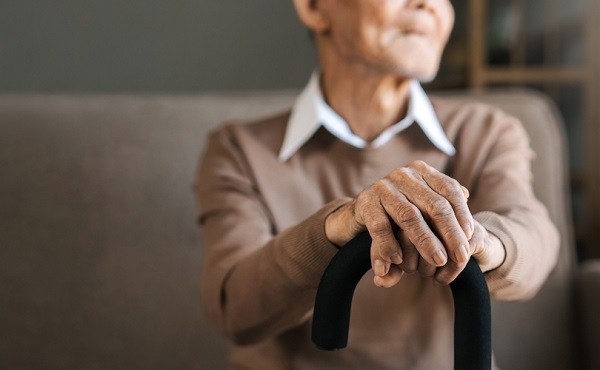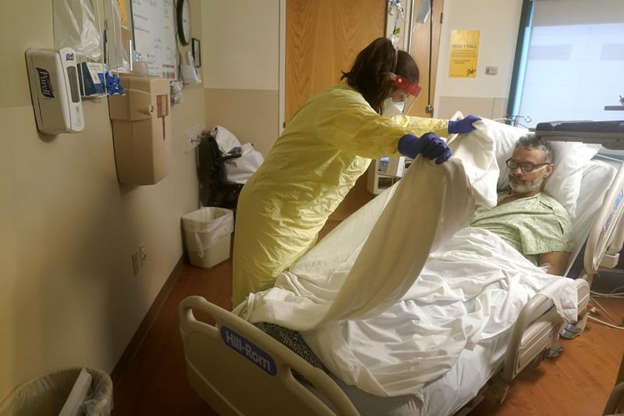MAiD
New report shows people are seeking euthanasia because they’re ‘isolated,’ afraid of being homeless

From LifeSiteNews
By Susan Ciancio, American Life League
According to Ontario’s chief coroner, ‘people asking to be killed’ through euthanasia ‘were more likely to require disability support and be socially isolated,’ and one woman in her 50s ‘asked to die largely because she could not get proper housing.’
Those of us who value the life of all human beings understand the dangers of assisted suicide, or “medical assistance in dying,” as it is euphemistically called in Canada. But now, others have begun to see the horrors of Canada’s laws. A recent article in the Frederick News-Post begins, “An expert committee reviewing euthanasia deaths in Canada’s most populous province has identified several cases where patients asked to be killed in part for social reasons such as isolation and fears of homelessness.”
The article examines reports issued by Ontario’s chief coroner, who reviewed the euthanasia deaths of those who did not have an allegedly terminal illness. It explains that “Canada’s legal criteria require a [purported] medical reason for euthanasia—a fatal diagnosis or unmanageable pain—but the committee’s reports show cases where people were euthanized based on other factors including an ‘unmet social need.’”
A doctor on this expert committee said she feels vindicated that people are seeing the horrors of what Canada’s laws are doing to people. She stated, “We’ve been gaslit for so many years when we raised fears about people getting MAiD because they were poor, disabled or socially isolated.”
Two such cases were discussed in the article. One was a man in his 40s who suffered with a bowel disease and who had a history of both mental illness and substance abuse. The report described him as “socially vulnerable and isolated.”
The second was a woman in her 50s who was “suffering from multiple chemical sensitivity syndrome” and who had a history of PTSD and mental illness. The report states that “she was socially isolated and asked to die largely because she could not get proper housing.”
This report emphasizes what those of us in the pro-life field have been saying for years. Euthanasia is a slippery slope. For example, when a country or a state allows a sick or dying person to end his life prematurely, we open the door for ambiguity of the word “sick.”
Indeed, what is most disturbing about the findings of this report is that the Ontario coroner found that the “people asking to be killed were more likely to require disability support and be socially isolated.”
What does that say about us as a society when people would rather die because they feel they have no one to help take care of them?
Our society puts more emphasis on what a person can do than on who a person is. Human beings have become like commodities that we discard when they are no longer useful.
Caring for others should not be something we are forced to do. It should be something we lovingly do. That doesn’t mean it’s easy. In fact, it can be incredibly difficult to care for someone who is sick or dying. That’s why it should never be something done alone. It takes a team of caregivers – from family, to friends, to sometimes paid staff in facilities or those who make house calls.
For years, I have seen this loving care firsthand with my uncle, whose wife passed away last week after battling dementia. He cared for her at home until he was physically unable to do so. The disease made her combative, and for his health and her safety, he moved her into a care facility.
But unlike some facilities that have staff who leave residents alone in their rooms or in chairs in large common rooms, those at this facility cared for her. My uncle visited her daily, and he always had glowing remarks about how kindly the staff treated her.
My uncle is a model of self-giving love that is increasingly uncommon in today’s world. He didn’t stop loving his wife when she became ill. He didn’t think she was better off dead. He didn’t find her to be a burden. On the contrary, he continued to love her because of who she was. The disease stole her memory, but it did not steal his love for her.
This is the epitome of loving care. This is what it means to be Christ’s hands on earth and to see people with His eyes.
Suffering is never easy, but walking with someone in their suffering is what we are called to do. My uncle did that beautifully, and he is a model to other struggling caregivers.
If everyone who was sick or suffering had people to lovingly care for and protect them, I daresay that the desire for assisted suicide would greatly diminish. After all, who would want to hasten death when they feel loved and cherished?
Susan Ciancio is a graduate of the University of Notre Dame and has worked as a writer and editor for over 20 years; 15 of those years have been in the pro-life sector. Currently, she is the editor of American Life League’s Celebrate Life Magazine—the nation’s premier Catholic pro-life magazine. She is also the director and executive editor of ALL’s Culture of Life Studies Program—a pre-K-12 Catholic pro-life education organization.
Business
‘Great Reset’ champion Klaus Schwab resigns from WEF

From LifeSiteNews
Schwab’s World Economic Forum became a globalist hub for population control, radical climate agenda, and transhuman ideology under his decades-long leadership.
Klaus Schwab, founder of the World Economic Forum and the face of the NGO’s elitist annual get-together in Davos, Switzerland, has resigned as chair of WEF.
Over the decades, but especially over the past several years, the WEF’s Davos annual symposium has become a lightning rod for conservative criticism due to the agendas being pushed there by the elites. As the Associated Press noted:
Widely regarded as a cheerleader for globalization, the WEF’s Davos gathering has in recent years drawn criticism from opponents on both left and right as an elitist talking shop detached from lives of ordinary people.
While WEF itself had no formal power, the annual Davos meeting brought together many of the world’s wealthiest and most influential figures, contributing to Schwab’s personal worth and influence.
Schwab’s resignation on April 20 was announced by the Geneva-based WEF on April 21, but did not indicate why the 88-year-old was resigning. “Following my recent announcement, and as I enter my 88th year, I have decided to step down from the position of Chair and as a member of the Board of Trustees, with immediate effect,” Schwab said in a brief statement. He gave no indication of what he plans to do next.
Schwab founded the World Economic Forum – originally the European Management Forum – in 1971, and its initial mission was to assist European business leaders in competing with American business and to learn from U.S. models and innovation. However, the mission soon expanded to the development of a global economic agenda.
Schwab detailed his own agenda in several books, including The Fourth Industrial Revolution (2016), in which he described the rise of a new industrial era in which technologies such artificial intelligence, gene editing, and advanced robotics would blur the lines between the digital, physical, and biological worlds. Schwab wrote:
We stand on the brink of a technological revolution that will fundamentally alter the way we live, work, and relate to one another. In its scale, scope, and complexity, the transformation will be unlike anything humankind has experienced before. We do not yet know just how it will unfold, but one thing is clear: the response to it must be integrated and comprehensive, involving all stakeholders of the global polity, from the public and private sectors to academia and civil society …
The Fourth Industrial Revolution, finally, will change not only what we do but also who we are. It will affect our identity and all the issues associated with it: our sense of privacy, our notions of ownership, our consumption patterns, the time we devote to work and leisure, and how we develop our careers, cultivate our skills, meet people, and nurture relationships. It is already changing our health and leading to a “quantified” self, and sooner than we think it may lead to human augmentation.
How? Microchips implanted into humans, for one. Schwab was a tech optimist who appeared to heartily welcome transhumanism; in a 2016 interview with France 24 discussing his book, he stated:
And then you have the microchip, which will be implanted, probably within the next ten years, first to open your car, your home, or to do your passport, your payments, and then it will be in your body to monitor your health.
In 2020, mere months into the pandemic, Schwab published COVID-19: The Great Reset, in which he detailed his view of the opportunity presented by the growing global crisis. According to Schwab, the crisis was an opportunity for a global reset that included “stakeholder capitalism,” in which corporations could integrate social and environmental goals into their operations, especially working toward “net-zero emissions” and a massive transition to green energy, and “harnessing” the Fourth Industrial Revolution, including artificial intelligence and automation.
Much of Schwab’s personal wealth came from running the World Economic Forum; as chairman, he earned an annual salary of 1 million Swiss francs (approximately $1 million USD), and the WEF was supported financially through membership fees from over 1,000 companies worldwide as well as significant contributions from organizations such as the Bill & Melinda Gates Foundation. Vice Chairman Peter Brabeck-Letmathe is now serving as interim chairman until his replacement has been selected.
2025 Federal Election
Euthanasia is out of control in Canada, but nobody is talking about it on the campaign trail

From LifeSiteNews
While refraining from campaigning on the issue, Poilievre, to his credit, has said previously that he will ‘scrap’ the Liberal’s plan of expanding euthanasia to the mentally ill ‘entirely.’
Canada’s euthanasia regime should be one of the key election issues on the campaign trail, but thus far, there seems to be little interest in discussing the issue.
This despite the fact that last month, the United Nations Committee on the Rights of Persons with Disabilities took the stunning step of publishing a report calling on Canada to halt “Track 2 MAID,” stop the planned 2027 expansion of euthanasia to those suffering solely from mental illness, and reject “advance directives” for euthanasia.
Track 2 MAID was legalized in Canada in 2021, when a lower Quebec court ruled that restricting euthanasia to those with “reasonably foreseeable death” was unconstitutional and expanding eligibility to a wide range of Canadians suffering from various conditions. The floodgates opened; over 60,000 Canadians have died by euthanasia since legalization.
In fact, the vice-chair of the UN committee, at a hearing in Geneva, went so far as to ask a Canadian government representative how it was possible not to view Canada’s euthanasia regime as a “step back into state-sponsored eugenics.”
When Conservative leader Pierre Poilievre was asked on the campaign trail if his government would make any changes to Canada’s laws, he responded: “People will continue to have the right to make that choice, the choice for themselves. We are not proposing to expand medical assistance in dying beyond the existing parameters. That said, we also believe that we need better healthcare so that people have all sorts of options.”
Poilievre then pivoted to discussing his policies to fix Canada’s broken healthcare system, making it quite clear that this is an issue that he is not eager to discuss—likely because of high support for euthanasia in Quebec. Indeed, Dying with Dignity—Canada’s relentless and well-funded euthanasia lobby—has been releasing polling data designed to discourage politicians from addressing the issue, emphasizing public support for their agenda.
Rebecca Vachon of Cardus has a good breakdown of DWD’s data that highlights the truth of the old political adage that polls are often commissioned to shape public opinion rather than measure it:
Poilievre, to his credit, has previously made his position on euthanasia for mental illness crystal clear, voting for a Conservative bill to ban the practice and stating in February that, if elected, “We will revoke an expansion entirely.” Mark Carney, on the other hand, has made no statement on euthanasia whatsoever, which indicates that he is likely to carry on the Trudeau government’s policies, which are still in effect—including the planned 2027 expansion of euthanasia to those suffering solely from mental illness.
Indeed, in response to a request for comment on the United Nations Committee on the Rights of Persons with Disabilities report and recommendations from Canadian Affairs, Health Canada ignored the condemnation of Canada’s regime and instead simply reiterated the current framework—including the planned 2027 eligibility expansion. In summary, if the Liberals are re-elected at the end of this month, it is full steam ahead—and Canadians with disabilities will simply have to live (or die) with it.
Despite the Conservative Party’s clear disinterest in campaigning on the issue, the choice before Canadians is still clear. Make no mistake: Expanding euthanasia to those with mental illness would be one of the greatest national tragedies since the 1988 R v. Morgentaler decision. If you have found the stories of the past several years horrifying, remember: They are nothing compared to the stories that we will all be forced to read, and perhaps even experience, once a Liberal government begins to facilitate suicide for those suffering solely from suicidal ideation.
-

 International1 day ago
International1 day agoPope Francis has died aged 88
-

 International1 day ago
International1 day agoPope Francis Dies on Day after Easter
-

 International24 hours ago
International24 hours agoJD Vance was one of the last people to meet Pope Francis
-

 2025 Federal Election1 day ago
2025 Federal Election1 day agoCarney’s budget means more debt than Trudeau’s
-

 2025 Federal Election13 hours ago
2025 Federal Election13 hours agoOttawa Confirms China interfering with 2025 federal election: Beijing Seeks to Block Joe Tay’s Election
-

 2025 Federal Election13 hours ago
2025 Federal Election13 hours agoReal Homes vs. Modular Shoeboxes: The Housing Battle Between Poilievre and Carney
-

 COVID-1913 hours ago
COVID-1913 hours agoNearly Half of “COVID-19 Deaths” Were Not Due to COVID-19 – Scientific Reports Journal
-

 2025 Federal Election13 hours ago
2025 Federal Election13 hours agoHow Canada’s Mainstream Media Lost the Public Trust








